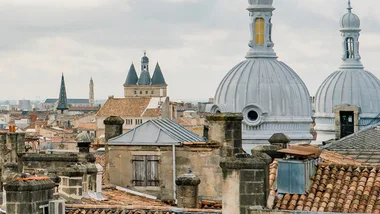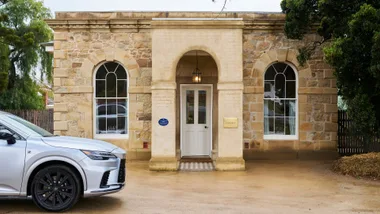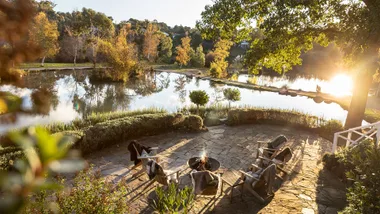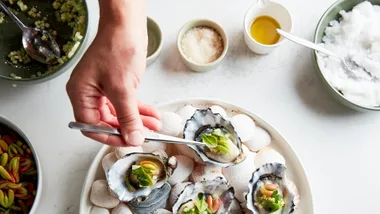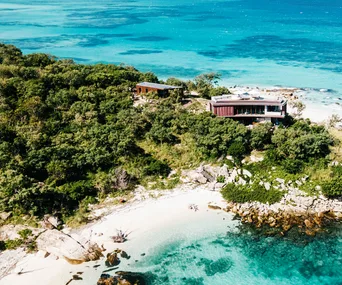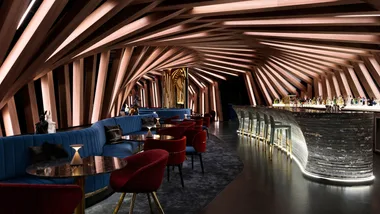Like many other Torinesi, the late Carlo Fruttero, a novelist and journalist, had a self-deprecating sense of humour. “Why come to Turin?” he would ask me, tongue-in-cheek. “There’s no Colosseum or Uffizi for you here! No Grand Canal or Pompeii!” He liked to belittle what he perceived as his native city’s lack of attractions and exalt those of “the real Italy” but, deep down, he was proud of its diversity. For, artistically, architecturally and culturally, Turin really is unlike anywhere else in the country.
To begin with, it was virtually untouched by the Renaissance. Until 1562, when Emanuele Filiberto, Duke of Savoy, moved his court here from Chambéry, Turin had been a provincial fortified town. A series of urban-planning schemes was undertaken to add lustre to the place. In 1682, Duke Carlo Emanuele II embarked on the equivalent of a modern-day marketing campaign when he commissioned the af, a catalogue of illustrations of the architectural marvels of his small duchy, for circulation among the courts of Europe. Two decades later, the Treaty of The Hague handed the Savoys the piecemeal kingdom of Piedmont-Savoy-Nice and Sardinia on a plate.
More building mania followed as the new royal family called in some of the greatest architects, artists and gardeners in Europe to turn Turin into a great cosmopolitan capital. In 1861, in the wake of the confused events of the Risorgimento, an all-Italian parliament was summoned to Turin and voted for the creation of the Kingdom of Italy with the city as national capital. And so it remained until 1865, when the baton was passed first to Florence, then to Rome.
An inventory at the time listed 22 royal palaces in Turin and environs. Beyond all human need, one might say. Visiting in 1856, the English traveller Bayle St John noted: “Turin has been swelled out to suit the convenience of a new royalty. It disappoints the stranger… because of its audacious air of pretension.” What he perceived as overblown display evokes wonder for today’s tourist. For Turin is a city of long, tree-lined avenues and Baroque magnificence – a city fit for kings.
When I first came to live here in the late 1970s, Turin gave off a sense of lost grandeur. A new dynasty reigned – the Agnellis, rulers of the Fiat empire – and the place was living up to its reputation as the “Detroit of Italy”. Those were years of political terrorism and industrial unrest. The art and architectural heritage was either indifferently managed or neglected – if Turin could be likened to a Cinquecento, its treasures definitely took a back seat.
Since then heavy industry has given way to creativity and design; today the city exudes dynamism. The hosting of events such as the 1990 FIFA World Cup, the 2006 Winter Olympics and celebrations for the 150th anniversary of the unification of Italy in 2011 made it get its act together. Buildings and roads were given a facelift and many of the riches that were long locked away are back on display.

Most of the royal palaces in the city centre stand on or around the scenographic Piazza Castello. On the north side, Palazzo Reale di Torino has an austere white 16th-century façade, designed by Amedeo di Castellamonte, but inside it is ablaze with decoration: gilded wooden ceilings, intarsia floors, tapestries, paintings, carpets, weapons, porcelain and ornamental clocks. It was at once the main court residence and the hub of Savoy power. Adjoining it are the chapel in which the Holy Shroud is kept, the Royal Armoury and the Royal Library, which houses Leonardo da Vinci’s famous self-portrait in red chalk. The gardens to the rear were the handiwork of André Le Nôtre of Versailles fame. Versailles also provided the influence for the façade of Palazzo Madama, designed by the court architect, the Sicilian Filippo Juvarra. Slap-bang in the middle of Piazza Castello, this bizarre building synthesises two thousand years of history: erected on the site of a gateway to the original Roman castrum, it is part medieval castle and part Baroque residence.
It now houses the Museo Civico d’Arte Antica, where the collection includes Portrait of a Man, a late masterpiece by Antonello da Messina, another Sicilian.
A short distance away, Palazzo Carignano, which now houses the Museo del Risorgimento, was the seat of Italy’s first parliament. Prime minister Camillo Cavour used to dine at the Ristorante del Cambio just opposite. A bronze plaque surmounts his favourite table where, more often than not, he would order roast veal with cubes of fried semolina. He also gave his name to a risotto made with Barolo that is still on the menu. Through the royal court Turin developed a taste for refined cooking and food presentation. At Ristorante del Cambio, chef Matteo Baronetto keeps tradition alive with classics such as agnolotti alla Piemontese, and finanziera, a concoction of calf’s sweetbreads, brains, bone marrow, cock’s combs and pickled mushrooms, an old-fashioned dish that’s now making a comeback.
About a kilometre away, the sedate Castello del Valentino stands amid the greenery on the banks of the Po. It was refurbished in the early 17th century as a maison de plaisance by Christine Marie, wife of Vittorio Amedeo I of Savoy and daughter of Henry IV of France, and looks more like a château on the Loire. On the hillside over the river, with its fountains and cascades, Villa della Regina is reminiscent of the 18th-century villas of Tivoli and Frascati near Rome.
All within walking distance of each another, the city palaces have wonderful charm and variety. But even more spectacular are the jewels in the so-called “corona delle delizie”, or “crown of delights”, a circle of royal residences in the countryside round Turin that was declared a UNESCO World Heritage Site in 1997. Most are easily reachable in half an hour or so by car thanks to a radial network of straight boulevards, originally designed as part of the 17th-century master plan.
One such leads southwards to the monumental Palazzina di Caccia of Stupinigi, again designed by Juvarra. The sight of the palace’s sweeping white façade as it comes into view among the trees is unforgettable.
I remember the astonishment on my sister’s face when she first came to visit. “I never imagined!” she gasped. Floating in the air atop the central cupola and visible for miles around, the statue of a huge bronze stag by the sculptor Francesco Ladatte (actually a copy, the original being on display at the ticket office) reminds one of the palace’s original function as a hunting lodge. The Savoys loved the chase and the myth of Diana the huntress is a leitmotif of tapestries, frescoes and paintings throughout. Occasionally the palace stages exhibitions and, such is the size of place from one end to the other, you might need a hunter to visit them. Inaugurated in 1731, the palace was the royal family’s favourite summer residence until the 1930s. It used to host balls, concerts, banquets and parties to salute the king before and after the hunt. Napoleon used Stupinigi as a country house when he came to Piedmont and his carriage is one of the exhibits in the adjoining Furniture Museum. His sister Paolina briefly lived in the palace, too, and King Vittorio Emanuele II was married here in 1842. It is a fairytale place and in 2012 it provided the perfect setting for an Italian TV adaptation of Rossini’s Cenerentola. At the front, it is preceded by a semicircle of 18th-century royal farmhouses and stables; to the rear are fine gardens and the Stupinigi Natural Park, which you can visit by bike.
Westwards, the imposing Rivoli Castle looms over the eponymous town at the mouth of the Susa Valley. Further down the valley good skiing is to be had at resorts such as Sauze d’Oulx and Bardonecchia, venues at the 2006 Winter Olympics. The castle dates from the 11th century and was ransacked by invading French soldiers in 1693. It was largely restored by royal engineer Michelangelo Garove, who also designed a broad avenue – the present-day Corso Francia, at 24 kilometres the longest in Turin – to connect it physically, visually and symbolically to Palazzo Reale in the city and the Basilica of Superga in the hills beyond, which houses the Savoy family mausoleum. The view from one end of the avenue to the other is stunning.
In 1984, following an overhaul, Rivoli Castle began a new life as a Museum of Contemporary Art. The contrast between the permanent collection, dominated by the Italian Arte Povera and Transavanguardia experimental movements, and the old setting is striking. On the walls in some rooms you can still see scrawls by French soldiers. A few years ago I witnessed another piece of vandalism when my wife furtively shifted one of the stones in Romulus Circle, an installation by the British artist Richard Long, with her foot. Contemporary art is lost on some people.
Not on Michelin-starred chef Davide Scabin, though, who runs Combal Zero, attached to the museum, 51st in the World’s 50 Best Restaurants list. Scabin creates combinations of colour and flavour that are masterpieces for the eye and palate alike. It is no coincidence that he teaches food design at Turin Polytechnic. He owes part of his fame to experimental dishes such as zuppizza, a deconstructed pizza Napoletana consisting of a confit tomato and an anchovy on a croûton served with a mozzarella cream soup; cyber-eggs, egg yolk and caviar wrapped in edible film; and Combal space lasagne, specially designed for a NASA mission. But he also offers his own take on tradition with delicious quail and tripe soup and veal cutlet breaded with crushed grissini, Turin’s answer to the cotoletta alla Milanese. Combal Zero’s sleek 110-metre dining room has parquet floors, Le Corbusier armchairs and panoramic windows. Dining there with the lights of the city twinkling in the distance is an experience to treasure. The last time I went, I had a Michelin-star snack in the kitchen with Scabin and we watched football on the television. That was a memorable experience too.
You’ll meet Scabin again at the Reggia di Venaria, another royal pleasure palace-cum-hunting lodge, just a few miles north-east of Rivoli. Not in the flesh but in Peopling the Palaces, a series of film installations by Peter Greenaway. These are vignettes in which, in lieu of the customary portrait paintings, bewigged Italian actors in period costume take the part of court characters – marquises and doctors, handmaidens and pages, secretaries and servants – and talk to you directly from the walls. Scabin, naturally enough, is a cook in the kitchen. The films were produced as part of an eight-year restoration project that concluded in 2007, when the palace reopened its doors. The Reggia is a unique example of 17th- and 18th-century international Baroque and all the usual suspects – Amedeo di Castellamonte, Michelangelo Garove, Filippo Juvarra – worked on it. Halls, reception rooms, chapels, stables courtyards – the scale of the place is breathtaking. The most important feature is the Galleria di Diana, a huge hall flooded by light and a pervasive sense of serenity. There were brilliant occasions here – parties, balls and court ceremonies that would spill over into the gardens from which, on a clear day, you can see the peaks of at least half the Alpine chain, from Liguria to Lombardy.
Overlooking the gardens from a terrace on the first floor of the palace’s eastern tower is another Michelin-starred restaurant, the Dolce Stil Novo. Chef Alfredo Russo describes his style as “new Italian”; his signature dishes are vitel tonné with caramelised citrus fruits and pasta in bianco, layers of egg pasta interspersed with a mousse of parmesan at three different degrees of ageing.
The palace stands at the centre of a larger stage that embraces the old town of Venaria Reale itself, a labyrinth in which one courtyard leads to another via arcades and lanes, and the immense Parco Naturale La Mandria, now a park, once a stud farm for the Savoy cavalry. I used to go to the park every Sunday at dawn to jog and look out for wildlife. I often met the same sounder of wild boar. The leader was an ugly, hulking brute. I nicknamed him Craxi after the head of the Italian Socialist Party, implicated during the “Clean Hands” corruption investigation that rocked Italian politics in the 1990s. There was a distinct resemblance.
Inside La Mandria is Borgo Castello, a royal holiday residence. It was here that Vittorio Emanuele II began his affair with Rosa Vercellana, nicknamed “la Bela Rosin”, later to become his morganatic wife.
Other holiday homes were acquired towards the end of the 18th century, but they are further afield.
The castle at Aglié, 48 kilometres north-west of Turin, is like Venaria in miniature; the one at Casotto, in the mountains 112 kilometres to the south-west, is currently closed for restoration work. In the 19th century, Govone castle, 96 kilometres away in the wine hills near Asti, was used by King Carlo Felice to host other European crowned heads in the summer months. In its converted stables is a fine restaurant. The chef, Pier Bussetti, is, like Davide Scabin, a devotee of food design. A dish of his is a permanent exhibit at the Milan Triennale Design Museum. Outlandishly named Spoon Shock Notorious’ Spark, it consists of a cube of raw tuna on fresh tomato with a slice of ginger and a drizzle of balsamic vinegar, followed by a capsule of Asian spices, white wine and dry vermouth.
As a teenager Jean-Jacques Rousseau worked in Turin as a footman. He was no fan of the hereditary monarchy. “The disadvantages of regency have been put in place of those of election,” he wrote, “apparent tranquillity has been preferred to wise administration, and men have chosen rather to risk having children, monstrosities, or imbeciles as rulers to having disputes over the choice of good kings.”
The scenically extravagant castle of Racconigi, a small town 80 kilometres due south of Turin, was acquired by the House of Savoy in the 16th century and used as a country retreat in the summer months. It had diplomatic functions, too. The Galleria del Cardinale was a corridor of apartments for visiting cardinals, each with its own key as in a modern hotel. The Chinese Apartment, so-called for its oriental décor, was where Czar Nicholas II stayed when he came to discuss the Balkan question with Vittorio Emanuele III in October 1909. A small hut similar to a Russian dacha was built in the vast palace grounds to commemorate the event. Then as now, political violence was rife – the Italian king’s father, Umberto I, had been assassinated in 1900 and we all know what happened to the czar eight years later – so security was tight.
The news travelled as far as Australia. On 27 October 1909, the Bendigo Advertiser wrote: “A further example of the remarkable measures of precaution observed at Racconigi to ensure the safety of the Czar and his host the King of Italy is reported in connection with a court concert held during the Czar’s brief visit. An order was raised compelling all ladies attending the concert to arrive at the building without cloaks, mantles, or reticules, thus obviating the possibility of their bringing bombs or other weapons.”
Three days earlier the two heads of state had travelled to another royal castle, Pollenzo, near Alba, for a shooting party in its reserve. The architectural complex there is now home to the Slow Food-inspired University of Gastronomic Sciences and a four-star hotel, the Albergo dell’Agenzia. If you want to sleep in a Savoy residence, this could be a good base for your holiday. Or stay in Turin and branch outwards, but be sure to leave yourself plenty of time to cover the whole circuit – 10 days, say, maybe more. A whistle-stop motoring tour would, as Italians say, be like going to Rome without seeing the Pope.
GETTING THERE
There are flights to Turin from major European cities such as London, Barcelona, Madrid, Munich, Frankfurt, Brussels, Düsseldorf and Amsterdam, and domestic flights from Rome, Naples, Bari and Palermo. The city can also by easily reached by car and train. The palaces and castles mentioned are best visited by car. For opening times, admission details and more information, see the websites of the individual venues, all with English versions.
WHERE TO STAY
Elegant four-star hotel in the centre of town.
Via Carlo Alberto 35, +39 011 51 70171
Tech four-star hotel in a former Fiat factory, converted into an exhibition centre by architect Renzo Piano.
Via Nizza, 262, 10126, Turin, +39 011 66 42000
Cool design B&B in a semi-central bohemian neighbourhood.
Via Belfiore 18, +39 347 1526 130
Smart B&B, a stone’s throw from Piazza Castello.
Via Carlo Alberto 41, +39 011 86 00056
STAY OUT OF TOWN
Grand four-star hotel in a former Savoy residence.
Via Fossano 21, 12042 Pollenzo (Cuneo) – Bra, +39 0172 45 8600
WHERE TO EAT
Piazza Carignano 2, Turin, +39 011 54 6690
Piazzale Mafalda di Savoia, Rivoli, Turin, +39 011 95 65225
Piazza della Repubblica, 4, Venaria Reale, Turin, +39 011 49 92343
Ristorante Le Scuderie del Castello di Govone
Piazza Vittorio Emanuele II 17, Govone, Cuneo, +39 0173 32 8096

